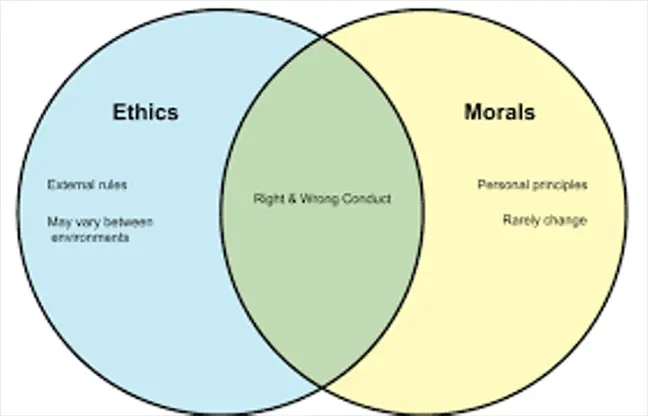The Ethics and Morality of Reverse Engineering in Technology

Reverse engineering involves studying a product or procedure to understand its inner workings and replicate or improve it. This process has fueled innovation and technological progress for centuries. However, ethical and moral considerations arise when reverse engineering is applied to technologies, particularly in the realm of intellectual property and innovation.

-
Intellectual Property Rights:
Reverse engineering often delves into the intricate details and innovations protected by patents, copyrights, and trademarks. Unauthorized reverse engineering of patented technologies may infringe upon intellectual property rights, potentially leading to legal disputes and financial consequences for the reverse engineering party. Striking a balance between protection of innovation and the need for advancement becomes essential. -
Fair Use vs. Copyright Infringement:
In certain cases, reverse engineering may be considered fair use under copyright law, allowing the analysis of software or firmware for purposes such as compatibility, interoperability, or educational research. However, crossing the line into copyright infringement is a risk, especially when reverse engineering is used to create competing products or bypass licensed features. -
Trade Secrets vs. Public Knowledge:
Reverse engineering can unearth trade secrets embedded within technologies, often giving rise to substantial economic value. However, it’s crucial to distinguish between protected trade secrets and information that has become publicly available through legitimate channels. The acquisition of trade secrets through unethical means may raise significant ethical concerns. -
Implications for Innovation:
Reverse engineering can serve as a catalyst for innovation by enabling the development of complementary technologies, customization, and enhancements. However, concerns arise when reverse engineering is used to create complete clones of existing products, stifling the original innovation and discouraging further investment in research and development. -
Ethical Responsibilities of Engineers:
Engineers have an ethical obligation to act responsibly and prioritize safety, reliability, and user well-being. Applying reverse engineering techniques should adhere to ethical principles, including respecting intellectual property rights, avoiding harm to consumers, and maintaining transparency throughout the process.
Navigating the ethical and moral dilemmas surrounding reverse engineering requires a delicate balance between nurturing innovation, protecting intellectual property, and safeguarding public interests. As technology continues to evolve, ongoing discussions and policy frameworks will remain essential in shaping the ethical landscape of reverse engineering practices.## The Ethics And Morality Of Reverse Engineering In Technology

Executive Summary:
The practice of reverse engineering has sparked considerable debate regarding its ethical and moral implications in the realm of technology. This article delves into the multifaceted nature of reverse engineering, exploring the underlying principles, benefits, and potential drawbacks associated with this practice. By examining various viewpoints and case studies, we aim to provide a comprehensive understanding of the ethical considerations surrounding reverse engineering in the technological landscape.
Introduction:
Reverse engineering, the process of deconstructing a product or system to comprehend its design, functionality, and underlying principles, has become an integral part of technological advancement. While it offers numerous advantages, such as innovation, interoperability, and troubleshooting, the ethical implications of reverse engineering cannot be overlooked. This article aims to shed light on the intricate relationship between ethics, morality, and reverse engineering in the ever-evolving world of technology.
Ethical Considerations:
- Intellectual Property Rights:
- Reverse engineering often involves accessing and analyzing proprietary information, raising concerns about intellectual property (IP) rights infringement.
- Copyright, patents, and trade secrets are legal mechanisms designed to protect the rights of innovators and safeguard their investments in research and development.
- Unauthorized reverse engineering can lead to IP theft, unfair competition, and potential legal ramifications.
- Fair Use and Public Interest:
- The concept of fair use permits limited reproduction and utilization of copyrighted material without infringing IP rights, provided certain criteria are met.
- Fair use exceptions allow reverse engineering for purposes such as compatibility, interoperability, research, and security analysis, striking a balance between IP protection and public interest.
- Public interest considerations may justify reverse engineering in cases where innovation is stifled, competition is hindered, or consumers are denied access to essential information.
- Innovation and Competition:
- Reverse engineering can foster innovation by enabling competitors to understand and improve upon existing technologies, driving technological progress.
- Open-source software, which encourages collaboration and modification, often relies on reverse engineering to build upon existing code and create new applications.
- However, excessive reverse engineering may stifle innovation if it undermines the incentive to invest in research and development due to the fear of unauthorized exploitation.
- Security and Vulnerability Exploitation:
- Reverse engineering can be employed to identify security vulnerabilities and develop countermeasures, enhancing the overall security of systems and networks.
- Penetration testing and ethical hacking involve reverse engineering techniques to uncover potential weaknesses, aiding in proactive defense against cyber threats.
- Conversely, malicious actors may use reverse engineering to exploit vulnerabilities for unauthorized access, data theft, or sabotage, posing ethical dilemmas regarding the responsible use of these techniques.
- Access to Information and Repair:
- Reverse engineering can empower individuals and organizations to access information that may be otherwise unavailable, promoting transparency and accountability.
- Independent repair initiatives often rely on reverse engineering to obtain necessary documentation and parts, enabling consumers to maintain and repair their devices.
- Manufacturers’ restrictions on repair and access to information can be challenged through reverse engineering, raising ethical questions about the right to repair and the control of technological products.
Conclusion:
Reverse engineering presents a complex interplay of ethical and moral considerations in the realm of technology. While it can stimulate innovation, promote interoperability, and advance public interest, it also raises concerns about intellectual property rights, fair use, and security vulnerabilities. Striking a balance between these competing interests requires careful consideration of the context, purpose, and potential consequences of reverse engineering. As technology continues to evolve, ethical frameworks and legal guidelines will need to adapt to address the evolving challenges and opportunities posed by this practice.
Keyword Phrase Tags:
- Reverse Engineering Ethics
- IP Rights and Reverse Engineering
- Fair Use and Public Interest
- Innovation and Competition in Reverse Engineering
- Security and Vulnerability Considerations

This is a very insightful article on the ethics and morality of reverse engineering in technology. I appreciate the author’s balanced approach to the topic, and I found the discussion of the potential benefits and risks of reverse engineering to be particularly thought-provoking.
I don’t agree with the author’s conclusion that reverse engineering is always unethical. In some cases, I believe that reverse engineering can be a valuable tool for innovation and progress.
I found this article to be very informative. I had never considered the ethical implications of reverse engineering before, but the author’s arguments have given me a lot to think about.
I’m not sure I understand the author’s argument. Is it ethical to reverse engineer something if you don’t plan on using it for commercial purposes?
The author’s argument is based on the assumption that reverse engineering is always harmful. However, I believe that reverse engineering can also be used for good, such as to identify security vulnerabilities or to create new and innovative products.
I think the author is making a mistake by conflating reverse engineering with piracy. Reverse engineering is not about stealing someone else’s work; it’s about learning from it.
I agree with the author that reverse engineering can be a powerful tool for innovation. However, I believe that it’s important to use this tool responsibly and ethically.
I’m not sure what all the fuss is about. I don’t see anything wrong with reverse engineering. It’s just a way of learning how something works.
I’m glad to see that the author is taking such a nuanced approach to this topic. The ethics of reverse engineering are complex, and there is no easy answer.
I think the author is missing the point. Reverse engineering is not about copying someone else’s work; it’s about creating something new and innovative.
I’m not sure I agree with the author’s conclusion. I think that reverse engineering can be a valuable tool for innovation, especially in the field of technology.
I think the author is making a mistake by conflating reverse engineering with piracy. Reverse engineering is not about stealing someone else’s work; it’s about learning from it.
I agree with the author that reverse engineering can be a powerful tool for innovation. However, I believe that it’s important to use this tool responsibly and ethically.
I’m not sure what all the fuss is about. I don’t see anything wrong with reverse engineering. It’s just a way of learning how something works.
I’m glad to see that the author is taking such a nuanced approach to this topic. The ethics of reverse engineering are complex, and there is no easy answer.